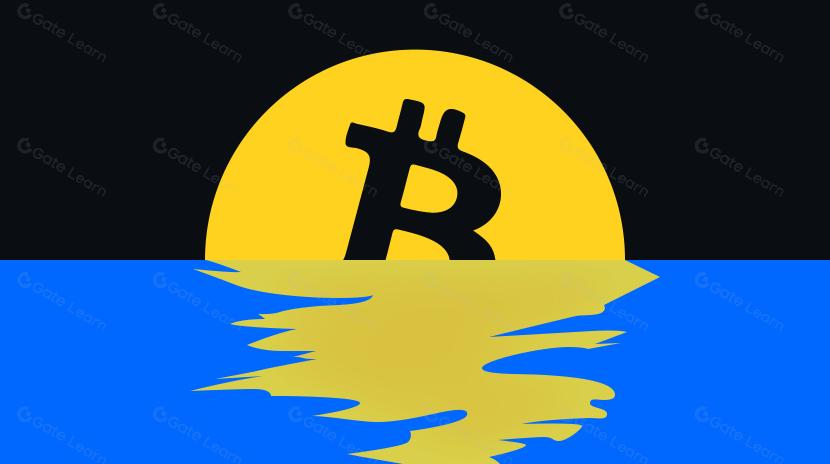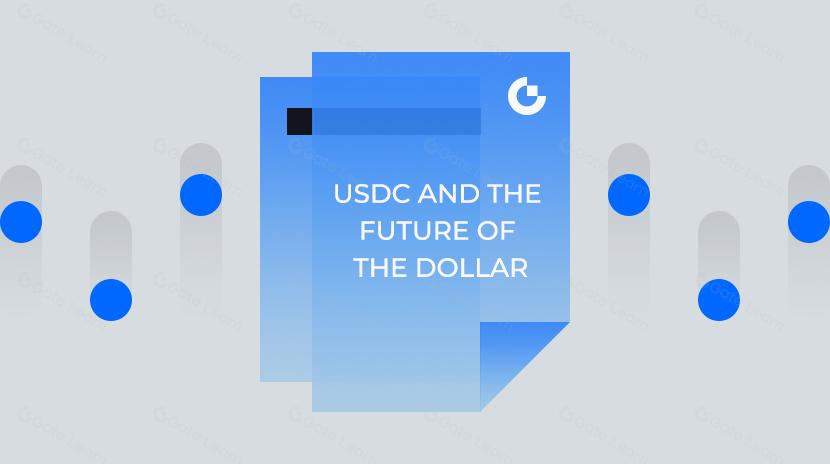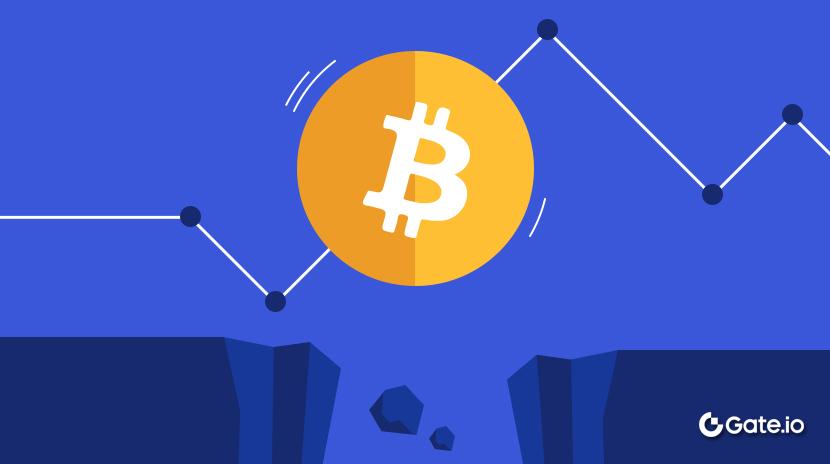Gate Research: Relatório de Política e Macro Web3 (4 a 10 de abril de 2025)
Prefácio
Esta semana, a indústria Web3 experimentou vários desenvolvimentos importantes nas dimensões de política e macroeconomia. A postura de tarifas flutuantes do ex-Presidente Trump injetou incerteza significativa nos mercados, levando a uma grande volatilidade nas ações globais e ativos criptográficos. Em 10 de abril, a suspensão das tarifas de Trump desencadeou um amplo rali de mercado: as ações dos EUA e as criptomoedas se recuperaram simultaneamente, com o Bitcoin ultrapassando os $82.000. Em 9 de abril, a SEC retirou a sua ação contra a Ripple, coincidindo com o lançamento do primeiro ETF ligado ao XRP. Em 8 de abril, o Serviço Nacional de Pensões da Coreia do Sul integrou a gestão baseada em blockchain, abrindo caminho para uma adoção mais ampla de ativos criptográficos. Também em 8 de abril, a Comissão de Valores Mobiliários e Futuros de Hong Kong (SFC) anunciou que permitiria serviços de staking para ETFs de ativos virtuais no local, introduzindo limites para melhorar a gestão de riscos. Em 6 de abril, a SEC começou a rever as políticas de ativos digitais da administração Biden, potencialmente lançando as bases para uma relaxação regulatória. Em 4 de abril, a folha de pagamento não agrícola dos EUA para março superou as expectativas, destacando a contínua força do mercado de trabalho dos EUA.
Abstrato
- 10 de abril— Trump suspende tarifas, desencadeando um amplo rali de mercado: ações dos EUA e criptoativos dispararam, o Bitcoin ultrapassa os $82.000.
- 9 de abrilA SEC retira a sua ação contra a Ripple; o primeiro ETF ligado ao XRP entra em funcionamento.
- 8 de abril— A SFC de Hong Kong permitirá o staking para ETFs de ativos virtuais spot, com limites para reforçar os controlos de risco.
- 8 de abril— O National Pension Service da Coreia do Sul adota blockchain para gestão, avançando na integração de ativos criptográficos.
- 6 de abrilA SEC analisa as políticas de ativos digitais da era Biden, potencialmente sinalizando uma tendência de flexibilização regulatória.
- 4 de abril- Os números de emprego não agrícola de março nos EUA superam as expectativas, refletindo um mercado de trabalho resiliente.
Eventos Chave
10 de abril - Suspensão das tarifas de Trump gera uma ampla manifestação de mercado: Ações dos EUA e criptomoedas se recuperam em conjunto, o Bitcoin ultrapassa os $82,000
Em 9 de abril, o ex-presidente dos EUA, Donald Trump, anunciou a suspensão de 90 dias de novas tarifas sobre a maioria dos países. Os mercados globais responderam rapidamente com um raro e amplo rally, refletindo o otimismo dos investidores com a redução das tensões comerciais. Segundo o comunicado, os EUA pausariam a imposição de novas tarifas sobre mais de 75 países que não retaliaram, criando uma janela para negociações comerciais renovadas. Embora as incertezas permaneçam, as notícias positivas impulsionaram uma forte alta nos mercados de ações dos EUA: o S&P 500 disparou 9,5%, marcando seu maior ganho em um único dia desde a Segunda Guerra Mundial. O Dow Jones subiu quase 3.000 pontos, e o Nasdaq saltou 12,2%, com uma forte alta após as 14h30 no horário do Leste, sinalizando uma clara mudança no sentimento de mercado em direção ao otimismo.
O mercado de criptomoedas subiu juntamente com os valores mobiliários tradicionais. O Bitcoin subiu de aproximadamente $76,000 para $82,572 num único dia, ganhando 8,19%. Entretanto, a capitalização total do mercado de criptomoedas aumentou 6,53%, ultrapassando os $2,61 trilhões.
Uma retrospetiva da linha do tempo dos anúncios tarifários de Trump revela como cada mudança de política desencadeou reações dramáticas do mercado. Em 1º de fevereiro, o governo Trump propôs abruptamente tarifas faseadas de 5% a 10% sobre 75 parceiros comerciais, visando setores-chave como aço, alumínio e energia renovável, originalmente previstas para entrar em vigor em 15 de março. Em 18 de fevereiro, surgiu o primeiro sinal de flexibilização da política, quando o Representante de Comércio dos EUA (USTR) anunciou isenções tarifárias para dispositivos médicos e semicondutores de 28 países. Então, em 2 de abril, a situação se inverteu novamente: Trump declarou uma tarifa global geral de 10% sobre centenas de países, ameaçando taxas "recíprocas" contra nações que supostamente "exploram" os EUA, que devem escalar em 9 de abril. Por fim, em um movimento surpresa em 9 de abril, a Casa Branca anunciou uma pausa de 90 dias em novas tarifas, dando tempo para novas negociações. Esta série de mudanças abruptas de política desencadeou um ciclo completo do mercado em três meses, desde vendas em pânico até ralis retaliatórios. [1]
9 de abril — SEC desiste do processo contra Ripple; Lançamento do primeiro ETF vinculado ao XRP
Após a U.S. Securities and Exchange Commission (SEC) abandonar a sua ação judicial contra a Ripple, a empresa de gestão de ativos Teucrium Trading LLC anunciou o lançamento do primeiro fundo de investimento negociado em bolsa (ETF) alavancado ligado ao XRP. O ETF, negociado sob o símbolo de ticker 'XXRP', tem uma taxa de 1,85% e está listado na bolsa NYSE Arca. A estreia de um ETF XRP assinala o crescente reconhecimento mainstream do token e reflete o panorama em maturação dos veículos de investimento cripto diversificados. Este lançamento não só estende a onda de participação institucional desencadeada pelos ETFs de Bitcoin e Ethereum, mas também sugere uma mudança regulatória de cautela para uma maior abertura.
Desde o início de 2024, os ETFs de Bitcoin à vista atraíram mais de $94 bilhões em entradas, enquanto os ETFs de Ethereum arrecadaram $6 bilhões. Em comparação, os ETFs ligados a ativos como XRP ainda estão em estágios iniciais. No entanto, com a melhoria da clareza regulatória, a introdução do ETF XRP poderia abrir caminho para outras classes de ativos digitais, apoiando o crescimento estrutural em todo o mercado de criptomoedas.
8 de abril - Hong Kong SFC irá permitir serviços de staking para ETFs de ativos virtuais spot, introduz limites para reforçar os controles de risco
A Comissão de Valores Mobiliários e Futuros de Hong Kong (SFC) anunciou que as plataformas licenciadas de negociação de ativos virtuais serão autorizadas a oferecer serviços de staking para ETFs de ativos virtuais à vista. Isso significa que os investidores podem em breve apostar suas participações em ETFs à vista para participar de redes blockchain e ganhar recompensas, marcando outro passo significativo no desenvolvimento regulamentado de ativos virtuais de Hong Kong.
Desde 2018, Hong Kong tem vindo a desenvolver ativamente um quadro regulamentar para ativos virtuais, tornando-se na primeira jurisdição na Ásia a lançar ETFs de criptomoedas spot em abril de 2023. Hoje, Hong Kong destaca-se como o maior mercado de ETFs de ativos virtuais na região da Ásia-Pacífico. A SFC também está a planear expandir o leque de ativos virtuais subjacentes elegíveis. Para além do Bitcoin e do Ethereum, em breve poderemos ver ETFs de cesto diversificados que acompanham múltiplos ativos de criptomoeda, enriquecendo ainda mais o panorama de mercado.
8 de abril - O Serviço Nacional de Pensões da Coreia do Sul Adota Gestão Blockchain, Abrindo Caminho para a Integração de Ativos Cripto
O Serviço Nacional de Pensões da Coreia do Sul (NPS), o terceiro maior fundo de pensões público do mundo, está a explorar a integração da tecnologia blockchain no seu extenso sistema de transações de fundos para melhorar a transparência e a segurança. Esta iniciativa reflete a abordagem proativa do fundo na avaliação do potencial de tecnologias de ponta na infraestrutura financeira tradicional.
Segundo relatos, a NPS gere atualmente cerca de KRW 1.224 trilhões (cerca de USD 836 bilhões) em ativos. O principal objetivo da adoção da blockchain é usar a tecnologia de livro-razão distribuído para evitar a adulteração de registros de transações e fortalecer os controles internos sobre depósitos, levantamentos e investimentos - crítico para salvaguardar os fundos de reforma de milhões de pessoas. Antes de lançar a fase de pesquisa, a NPS realizará um “procedimento de pré-divulgação”, convidando especialistas e empresas de blockchain a apresentar propostas técnicas e opiniões. Este passo é padrão em projetos públicos de grande escala na Coreia, e o feedback informará um estudo de viabilidade para determinar se a blockchain será integrada ao sistema de contabilidade de pensões.
Esta iniciativa coincide com o impulso mais amplo da Coreia do Sul para a adoção de blockchain e moeda digital, como o programa piloto da 7-Eleven que aceita a moeda digital do banco central, destacando o compromisso do país em integrar ativos digitais na vida diária.
6 de abril - SEC analisa políticas de criptomoedas da era Biden, sinalizando potencial alívio regulatório
Em 6 de abril de 2025, a Comissão de Valores Mobiliários dos EUA (SEC) anunciou uma revisão das políticas regulatórias de ativos digitais emitidas durante a administração Biden. A revisão abrange orientações para funcionários sobre estruturas de contratos de investimento, supervisão do mercado de futuros de Bitcoin e requisitos de divulgação do mercado de criptomoedas. Esta medida segue a Ordem Executiva 14192, “Desencadeando a Prosperidade Através da Desregulamentação”, assinada pelo Presidente Trump em janeiro de 2025, direcionando as agências para identificar e eliminar regulamentações redundantes com foco no crescimento econômico e inovação tecnológica.
O objetivo é identificar orientações da equipe que podem ser revistas ou retiradas para se alinharem com a postura pró-crescimento e pró-criptomoedas da nova administração. Entre 2023 e 2024, a SEC emitiu uma série de declarações influentes que serviram de referência regulatória-chave—cobrindo como determinar se um token é um título, quais divulgações são necessárias para os participantes do mercado de criptomoedas e diretrizes de risco para investimentos em futuros de Bitcoin. Esses frameworks podem agora enfrentar enfraquecimento ou revogação.
A mudança da SEC sinaliza um realinhamento em direção às preferências políticas da administração Trump. O presidente Trump havia anteriormente nomeado Paul Atkins, um defensor notável da desregulamentação, para liderar a SEC, promovendo um alinhamento mais próximo entre a agência e a liderança executiva. No entanto, a medida gerou preocupações entre os defensores da proteção do consumidor, que argumentam que regulamentações mais frouxas poderiam aumentar os riscos para os investidores no espaço criptográfico.
No futuro, a SEC precisará equilibrar seu mandato estatutário com o impulso do governo para a inovação e expansão econômica. Embora um ambiente regulatório mais relaxado possa beneficiar a indústria de criptomoedas, estimulando a inovação e atraindo capital, também aumenta a importância de prevenir a manipulação de mercado e fraudes, o que poderia minar a confiança dos investidores. [6]
4 de abril - Relatório de Empregos de Março dos EUA supera as expectativas, Mercado de Trabalho Mantém-se Resiliente
Na sexta-feira, 4 de abril, o Bureau of Labor Statistics dos EUA divulgou seu relatório de emprego de março, mostrando que os empregos não agrícolas aumentaram em 228.000, bem acima da previsão de mercado de 140.000 e da média de 12 meses de 158.000. As cifras de fevereiro foram revisadas em baixa em 34.000 para 117.000, enquanto os números de janeiro foram ajustados de 125.000 para 111.000, resultando numa revisão líquida para baixo de 48.000 empregos nos dois primeiros meses do ano.
Os ganhos de emprego de março foram liderados pelo setor de saúde (+54.000), serviços de assistência social (+24.000) e transporte e armazenamento (+23.000). Em contraste, os serviços temporários de ajuda perderam 6.400 empregos, com o emprego total nesse setor mantendo-se estável em 2,53 milhões. A taxa de penetração no emprego permaneceu estável em 1,58%.
Estes números indicam que o mercado de trabalho nos EUA continua robusto, potencialmente adiando quaisquer cortes nas taxas de juro a curto prazo pela Reserva Federal. Apesar das revisões em baixa nos meses anteriores, a expansão contínua em setores de serviços essenciais como saúde e serviços sociais tem ajudado a compensar a fraqueza em áreas mais voláteis como trabalho temporário. Isto sugere uma mudança estrutural na economia. Embora o emprego forte possa apoiar o consumo e fornecer um amortecedor para o crescimento econômico, as pressões salariais persistentes poderiam complicar os esforços da Reserva Federal para reduzir a inflação.
Resumo
Esta semana, o mercado de criptomoedas foi moldado por uma combinação de políticas macroeconómicas e desenvolvimentos regulatórios. Em 4 de abril (sexta-feira), o Bureau of Labor Statistics dos EUA lançou o seu relatório de emprego de março, mostrando um aumento significativo de 228.000 nos salários não agrícolas - bem acima da expectativa do mercado de 140.000. A SEC iniciou uma revisão das regulamentações de ativos digitais da era Biden, potencialmente abrindo caminho para uma supervisão mais relaxada. O Serviço Nacional de Pensões da Coreia do Sul começou a explorar a tecnologia blockchain para melhorar a transparência e segurança do seu vasto sistema de gestão de fundos. A Comissão de Valores Mobiliários e Futuros de Hong Kong (SFC) anunciou que as plataformas de negociação de ativos virtuais licenciadas poderão oferecer serviços de staking para ETFs de ativos virtuais spot. A SEC retirou a sua ação judicial contra a Ripple, e o primeiro ETF ligado ao XRP foi lançado. O anúncio de Trump de uma suspensão de tarifas por 90 dias desencadeou um amplo rali nos mercados globais, com tanto os ativos de U.S. equities como de criptomoedas a dispararem - o Bitcoin ultrapassou os $82.000.
A suspensão inesperada das tarifas de Trump criou uma janela temporária de alívio para os ativos de risco globais. No entanto, as incertezas contínuas em torno das políticas comerciais protecionistas, as pressões cíclicas sobre a economia dos EUA e o potencial de mais reversões de políticas continuam a limitar a recuperação da avaliação de ações globais e criptomoedas. Os investidores são aconselhados a permanecer cautelosos e monitorar de perto indicadores-chave, como a inflação básica dos EUA e mudanças na política monetária do Federal Reserve.
Referências:
- Reuters,https://www.reuters.com/world/trump-tariffs-live-markets-selloff-us-reciprocal-tariffs-kick-2025-04-09
- X,https://x.com/DeItaone/status/1909577023216861555
- Bloomberg,https://www.bloomberg.com/quote/XXRP:US
- Sfc,https://apps.sfc.hk/edistributionWeb/gateway/TC/news-and-announcements/news/doc?refNo=25PR47
- Daum,https://v.daum.net/v/20250407173012037
- X,https://x.com/SECGov/status/1908546943686492633
- Associação Americana de Emprego,https://americanstaffing.net/posts/2025/04/04/analysis-of-march-jobs-report/
Investigação Gate
A Gate Research é uma plataforma abrangente de pesquisa em blockchain e criptomoeda que fornece aos leitores conteúdo detalhado, incluindo análises técnicas, insights relevantes, revisões de mercado, pesquisas setoriais, previsões de tendências e análises de políticas macroeconómicas.
Clique noLinkpara saber mais
Aviso legal
Investir no mercado de criptomoedas envolve alto risco, e é recomendável que os usuários conduzam pesquisas independentes e compreendam completamente a natureza dos ativos e produtos que estão adquirindo antes de tomar quaisquer decisões de investimento. Gate.io não é responsável por quaisquer perdas ou danos causados por tais decisões de investimento.
Artigos relacionados

Tudo o que precisa saber sobre o Quantitative Strategy Trading

Um Guia para o Departamento de Eficiência Governamental (DOGE)

Como os Agentes de IA Impulsionarão a Cripto no Mercado Principal

USDC e o Futuro do Dólar

O que é MAGA? Decodificando o Token Temático de Trump
